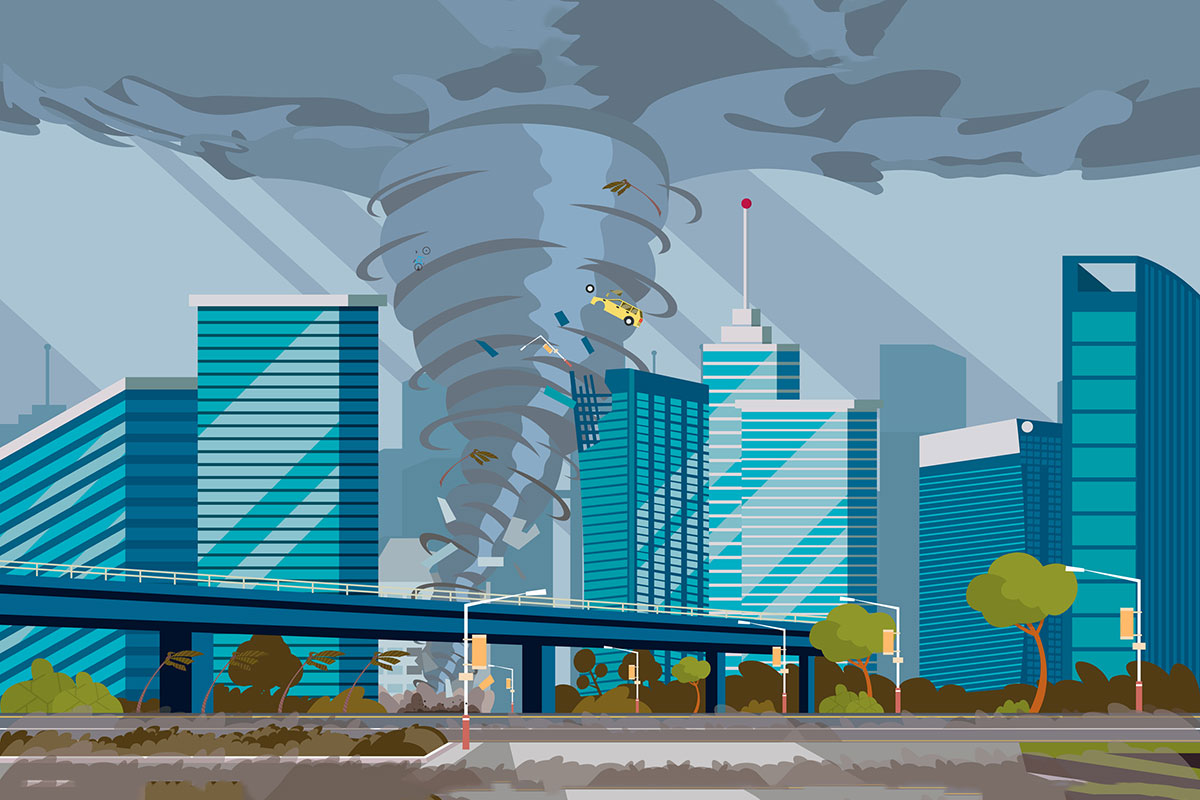
Climate risk in unlisted infrastructure investments is increasingly worrisome for institutional investors, particularly pension funds and insurance companies, according to French business school École des hautes études commerciales du Nord.
EDHEC sent an open letter to the European Insurance and Occupational Pensions Authority to alert it to the “materiality of physical climate risk in unlisted infrastructure investment,” which EDHEC warned is “not limited to a distant future.” The letter’s authors wrote that “in the event of runaway climate change,” some institutional investors could lose more than half of the value of their infrastructure portfolio before 2050.
The letter was signed by Frédéric Blanc-Brude, director of the EDHEC Infrastructure Institute, and Noël Amenc, an associate professor of finance. Many asset allocators invest in infrastructure as limited partners in funds that are not publicly traded.
“Many regulators and national authorities are currently encouraging pension funds to increase their investment in this attractive asset class,” the letter stated. “It should nonetheless be recognized that regarding climate risk, and notably physical climate risk, the data on the exposure and the financial materiality of this risk being realized for private assets is fairly limited.”
To compensate for the limited data, EDHEC conducted an analysis of the risk for unlisted infrastructure investment and found that “if no serious measures are taken, financial losses from physical risk (which are never zero) would be twice as high than in a low carbon scenario, for all investors.”
EDHEC research showed that the cost of physical risks within the “current policies” scenario represents, on average, 4.4% of the total net asset value of the assets in its reference database until 2050, with the average maximum loss at 27%.
According to EDHEC, the importance of physical climate risk is often downplayed because risks are expected to have negative results mostly after 2050, beyond most investors’ time horizon. EDHEC also criticized a pervasive perception that only less advanced economies would suffer from the physical consequences of climate change due to a lack of economic resilience, including in terms of infrastructure.
“Holding this view would be misguided,” EDHEC warned in its report. “Many investors are now exposed to longer-term investments through 20-25-year and evergreen funds, as well as direct investments that are meant to be held to maturity.”
The report added that the same LPs currently invested in 10-year funds will become exposed to the same assets in the next generation of infrastructure funds, whether they are follow-on funds or under new management.
“This materiality in advanced economies, which are mostly in the northern hemisphere, challenges the intuition of many investors and economists that these economic risks impact first and foremost the poorer populations of the global south,” the report stated. “Instead, the reverse is true: more value will be destroyed in places where more valuable assets exist.”
Related Stories:
How 5 Of the World’s Largest Pension Funds Invest to Combat Climate Change
Due Diligence: Using ESG as a Risk Mitigator
Is Emerging Market Infrastructure Investing Still Appealing?
Tags: Climate Risk, École des Hautes Etudes Commerciales du Nord, EDHEC, European Insurance and Occupational Pensions Authority, Frederic Blanc-Brude, Infrastructure, institutional investors, insurance companies, Noël Amenc, open letter, Pension Fund
